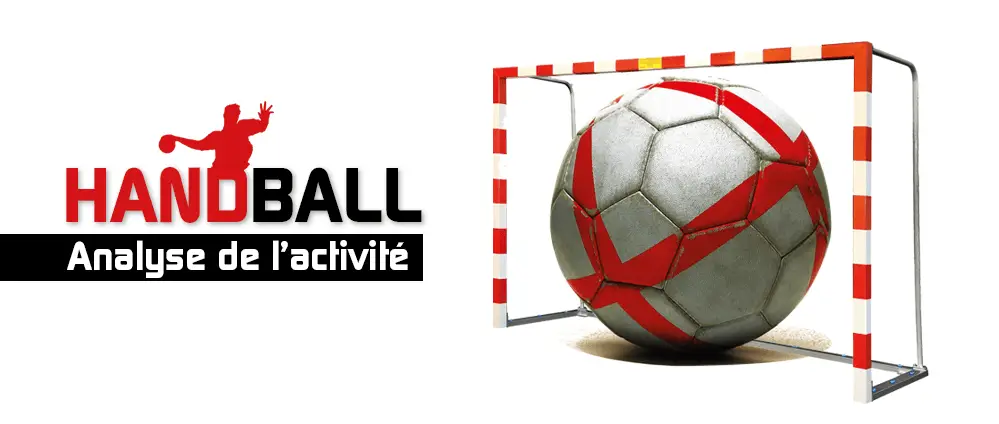Handball, also known as handball, is a sport of German origin. The term “handball” comes from the combination of the German words “hand” which means “hand” and “bola” which means “ball”. This game is played with hands and a ball.
What is the origin of the word handball?
Handball is a sport played by two teams of eleven or seven players, whose goal is to send a round ball into the opponent’s goal using only hand passes, with the exception of the goalkeeper who can use his feet.
However, handball is considered primarily a German sport. In 1919, Professor Carl Schellenz of the German Normal School of Physical Education in Leipzig proposed the adaptation of Torball, a sport practiced by German women.
To start a handball match, you need at least two teams of seven players each, so a total of 14 players on the field. This team game takes place with a ball on a rectangular field measuring 40 meters by 20 meters, divided into two parts. The goal of the players is to score goals in the opposing camp.
To win a handball match, teams must score points by throwing the ball into the opposing team’s goal. The team with the most points at the end of the match is declared the winner.
Modern handball was invented in Czechoslovakia in 1898 by Casey, a Dane who introduced a similar hand game. It was then imported to Germany where it was developed and became a modern version of handball.
In France, handball was introduced to the regions of Lorraine and Alsace in the 1930s.
The rules of handball can vary depending on the level of practice, whether professional or amateur.
What are the goalkeeper’s rights during a handball match?
During a handball match, the commitment takes place in the middle of the field after the referee’s whistle. The player taking the throw-off must have one foot on the center line and the other foot must remain on his own court. Opposing players must maintain a minimum distance of 3 meters from the thrower.
In 7-a-side handball, each team must shoot, dribble and pass to reach the opponent’s goal and score. As for singles or doubles handball, which is more popular in the United States, the goal must be scored by bouncing off the wall.
Here are the rules to follow during a handball match:
– It is permitted to throw, grab, stop, push or hit the ball using the hands (open or closed), arms, head, trunk, thighs and knees.
– The player can only hold the ball for a maximum of 3 seconds.
– It is allowed to take 3 steps or 4 supports maximum with the ball without “walking”.
Regarding errors made by defenders in handball, these are punished as soon as an irregularity is committed by the team. For example, when a player is surrounded by a defender. The referee then signals a foul and free throws must be played against the last defender, but without waiting for the referee’s whistle.
The handball zone is defined by the following actions:
– Tear or hit the ball that the opponent is holding in his hand.
– Grab an opposing player, surround him, push him or throw himself on him.
– There is a zone (encroachment) when the player enters this zone or steps on the line.
– If the defenders are in their own zone, this results in a free throw from a distance of 9 meters.
To start a handball match, we of course start with a commitment. The winning team then chooses the side of the court or throws from the center line. The player making the throw must have at least one foot on this line until the ball leaves their hand.
In handball, a 7 meter throw is equivalent to a penalty in football. This is a penalty shot ordered by the referee in the event of a team fault. The only difference is that in handball it can be awarded for fouls committed anywhere on the pitch.
What is a 7 meter throw?
When the referee shows a free throw, he shows it first. Free throws are called after a violation of the rules, for example when a player from the attacking team enters the goal circle. Free throws are taken from the location where the infraction was committed.
Free throws are ordered when a foul is committed during the match, for the following cases: small stroller, irregular contact, etc.
The rules of handball are as follows:
– It is permitted to: throw, grab, stop, push or hit the ball using the hands (open or closed), arms, head, body, thighs and knees.
– Hold the ball for a maximum of 3 seconds.
– Take 3 steps or a maximum of 4 touches with the ball (otherwise “walk”).
The match begins with the referee’s starting whistle and ends with an automatic sound signal from the wall timing system or an end signal from the timekeeper. If no signal is given, the referee blows the whistle to signal that the match is over (see Rule 17.10).
Concerning the playing time of U16 handball, the normal duration for all teams whose players are at least 16 years old is 2 times 30 minutes; the half-time break is 10 minutes.
Matches pit two teams against each other and generally take place in two 30-minute halves, each separated by a 15-minute break.
What is the minimum number of players to start a handball match?
– Touch and bring back into the goal area a ball that is lying on the ground or rolling on the ground outside the goal area; Bring the ball from the playing area to the goal zone.
– The size of a classic handball court is 40 meters long and 20 meters wide.
– When throwing a handball, your hands should be above your head. Your elbows should be high, at head level. Throw the ball toward the target with a shoulder swing and flex your wrist at the end of the movement. Fingers should be pointing towards the target.
– The zones authorized by the guards are defined by a solid semi-circle with a radius of 6 meters. Only guards are allowed to enter this area.
– A handball team generally consists of a goalkeeper and six outfield players, divided into two wingers (right and left), two defenders (right and left), a center half (or fullback) and a pivot. There is no limit to the number of replacements.


